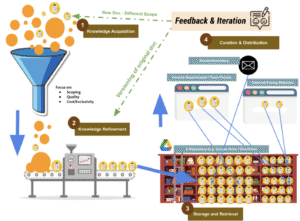In the dynamic world of K-12 education, operational efficiency and robust support systems are the bedrock of student success. From managing complex data submissions to streamlining district-wide processes, the unsung heroes of K-12 operations are constantly adapting and innovating. But how do we ensure continuous improvement, learn from every cycle, and build even stronger systems for the future?
The answer often lies in a powerful, yet frequently underutilized, tool: the post-mortem.
What Exactly is a Post-Mortem in the K-12 Context?
At its core, a post-mortem is a structured “lessons learned” session conducted after a significant project, a major operational period (like year-end closures), or a critical support initiative. While the name might sound a bit stark, its purpose is anything but. It’s a forward-looking, constructive review designed to:
- Understand what happened: Gaining a clear, shared understanding of the recent operational period.
- Explore why it happened: Moving beyond symptoms to identify the root causes of both successes and challenges.
- Determine how to do it better next time: Translating insights into actionable strategies for future improvements.
Crucially, a post-mortem is a blame-free zone. The focus is on the process, the tools, and the communication, not on individual performance. It’s about collective learning and systemic enhancement.
Why K-12 Operations Leaders Should Embrace Post-Mortems
For K-12 operations professionals, implementing regular post-mortems offers profound benefits:
- Optimized Processes: Every operational cycle uncovers areas for improvement. A post-mortem provides a dedicated forum to pinpoint inefficiencies, bottlenecks, and redundancies. Imagine streamlining student registration flows, simplifying HR onboarding, or refining transportation routes based on real-world feedback.
- Enhanced Tools and Technology Utilization: Were your SIS, ERP, or communication platforms truly supporting your team, or did they create new hurdles? Post-mortems offer critical insights into technology gaps or underutilized features, guiding smarter investments and better training.
- Improved Communication Pathways: Miscommunication can derail even the best-laid plans. These sessions highlight where communication breakdowns occurred—internally, with school sites, or with external stakeholders—allowing for the development of clearer protocols and channels.
- Proactive Problem Solving: Many operational “fire drills” are recurring issues. By drilling down to root causes, districts can implement preventative measures, turning reactive problem-solving into proactive strategic planning. This means fewer surprises and more predictable outcomes.
- Empowered and Engaged Teams: When team members see their feedback directly influencing future processes, it fosters a culture of ownership and continuous improvement. It shows their insights are valued, leading to increased morale and efficiency.
- Knowledge Transfer and Retention: In a field often facing staff transitions, post-mortems help codify institutional knowledge. Documenting lessons learned ensures that valuable insights aren’t lost, making onboarding for new team members smoother and reducing the learning curve for complex annual tasks.
Making It Work: Key Elements of a Successful K-12 Post-Mortem
To maximize the value of your post-mortem, consider these elements:
- Clear Scope: Define the specific project or operational period being reviewed.
- Blameless Culture: Emphasize that the goal is process improvement, not individual criticism.
- Data-Driven Discussion: Encourage participants to bring specific examples, metrics, or observations.
- Actionable Outcomes: Ensure every identified issue leads to concrete action items, assigned owners, and clear deadlines.
- Follow-Up: Schedule future check-ins to monitor the implementation of agreed-upon actions.
For K-12 districts aiming for operational excellence, the post-mortem is more than just a meeting; it’s a commitment to learning, adapting, and continuously elevating the support systems that empower students, staff, and communities. By looking back thoughtfully, we can build a much more efficient and effective path forward.




